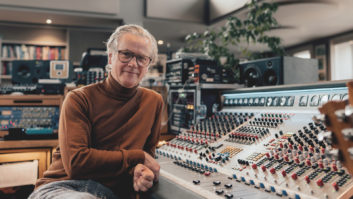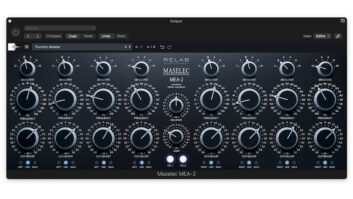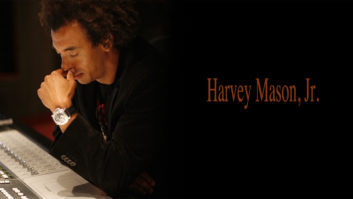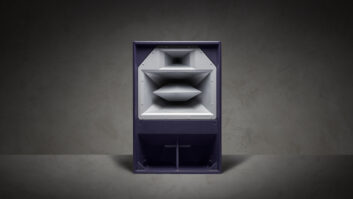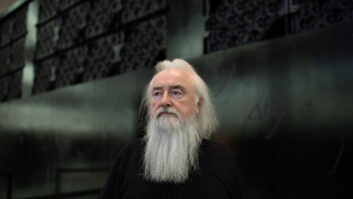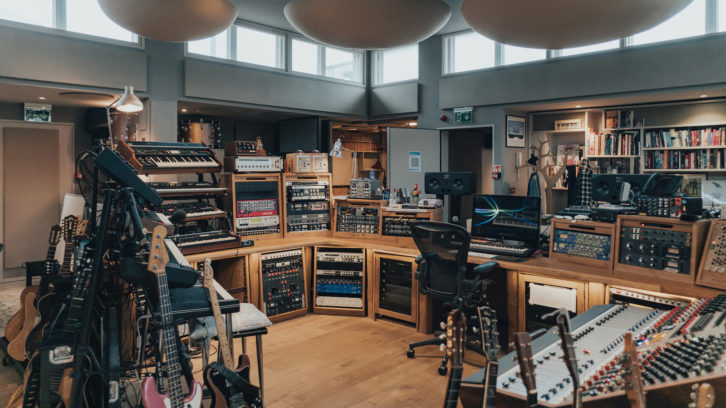
Dive further into our Mix cover story profiling his songwriter, producer, engineer and studio owner Guy Chambers, as he shares how he built and outfitted London’s Sleeper Sounds, and discusses his move into music for TV & Film. Don’t miss out on Part 1!
Chambers’ curiosity about all things audio started early in life, and his fascination with studios from about the age of 15. His dad’s work as a musician moved the family from London to Liverpool when Chambers was young, and while still a schoolboy, he joined a local band, Hambi and the Dance, on keyboards. At various times during the band’s relatively short existence, the lineup also included members of Frankie Goes to Hollywood, China Crisis and The Mission.
The band, signed to Virgin, spent their album advance outfitting The Pink, a now legendary studio that was central to the Liverpool music scene of the day. Opened in the 1980s, the studio hosted early recording sessions by local bands such as Dead or Alive, A Flock of Seagulls and Frankie Goes to Hollywood. The house engineer at The Pink, Steve Power, just three years older than Chambers, became his mentor in the studio. The pair later reunited to coproduce Robbie Williams’ first five solo albums.
It was at London’s Guildhall School of Music, however, where Chambers went to study composition and piano at age 18, that he really honed his production chops. “It was the only academy at that time that had a proper recording studio,” he recalls. “There were only two of us using the 16-track studio at that time, and I was there for four years, so I got to use it a lot. That’s where I started to learn to produce.”
He’s had many studio setups since. “My first was a Fostex 4-track cassette,” he says. “Then I had an 8-track Tascam with ADATs and Cubase, back in the ’90s. I think those Tascams are fantastic; I got pretty good results from that.” He still has the Tascam TSR-8, he says, but it needs to be repaired.
His work with Williams led to bigger and better production facilities. “Once I got some success with Robbie Williams, I got a professional studio at Mayfair Studios in Primrose Hill,” which is just north of Regent’s Park in London. “I had my own room there for quite a long time, but sadly that building got sold. Then I moved around the corner to another building in Primrose Hill, opposite Primal Scream’s studio. That’s when I bought the EMI desk. That was a happy time; it was a really nice studio.”
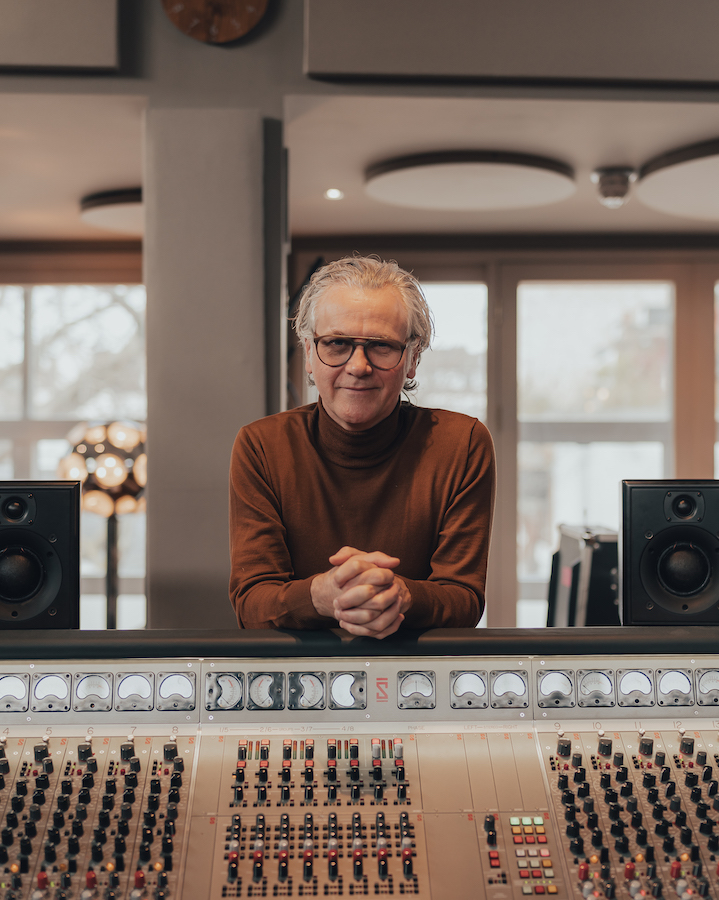
BUILDING SLEEPER SOUNDS
Sleeper Sounds opened nine years ago in a neighborhood Chambers selected for its proximity to other studios and for the community. “I like the area very much. It’s one of the few bohemian parts of London left.” The building is a standalone freehold, a rare commodity in London, especially with parking. No one has ever grumbled about the noise. “It doesn’t touch any other building, so we’ve never had a complaint,” he says. More importantly, perhaps, “It’s got a lot of natural light, which for me is essential, because it can be quite gray here. You can see the sunsets from my studio, which is really nice over West London.”
Producer, mixer and sound designer Richard Flack basically built the studio, Chambers acknowledges. “I produced Robbie Williams with him, and he also builds studios. It was Richard’s idea for the island in the middle of the room,” encircling the mix position and housing much of the recording equipment and keyboards. “He built the vocal booth, and we’re thinking of building a drum booth.”
The ceiling clouds in the Country Life-like interior of Sleeper’s spacious Studio 1 control room are not only visually arresting but also acoustically effective, he says. “I’ve been going to the Royal Albert Hall since I was a kid. It’s my favorite venue in the world for classical music. I’ve always thought the hanging saucers [there] are particularly fantastic, so I thought having a little bit of that in my studio was a nice idea— and they work really well.”
With a long history of putting together personal studios, Chambers has, not surprisingly, amassed quite a collection of audio gear. Just a few of the vintage equipment highlights include Telefunken, Neve and Cadac mic preamps; Neve and PYE compressors; AKG and Great British Spring reverbs; and an enviable selection of mics, including a variety of Neumann U 47 FET, U 87 Ai and U 89 models, as well as examples from Telefunken, Coles and STC.
The instrument list, especially the keyboards, is no less impressive. Chambers replaced an aging Mellotron with a potted plant, he admits, laughing, but there’s a new digital Mellotron M4000D available, as well as a 1922 Steinway Model D grand piano, a Hammond B3 organ and a Hohner Clavinet D6, among many others. “I’ve been collecting for 25 years, and I still look out for stuff now,” he says, admitting that there is one unicorn on his list. “I’m always looking for a celeste; they’re very, very difficult to find in the U.K.”
You might expect that for someone who spends all his time writing and producing with other artists, Chambers would want constant access to such a carefully curated collection of gear, but he is happy to share. “I actually have four rooms in my building,” he says. “When Studio 1 is being used, I go down to Studio 2. So quite often I’m in a small room, but I don’t mind; I like sharing my space. I like the fact that it inspires other artists.”
WHAT’S NEXT?
After 35 years on the pop merry-go-round, Chambers has been expanding his horizons. “I find the whole co-writing thing now quite dispiriting,” he says. “I don’t really enjoy it anymore. I’m talking about trying to write a hit that’s going to go on the radio in the U.K. That’s not something that excites me, and I don’t think it plays to my strengths, so I’m at a point in my career where I’m focusing now on musicals.
“I did a musical with Robbie Williams, Boy in the Dress,” he continues. The show, adapted from the book by David Walliams, co-creator of the BBC’s Little Britain comedy series, debuted at the Royal Shakespeare Theatre in 2019. “And I’m working on another one now. I’m more interested in the theater and getting my music out that way.”
Songs written and co-written by Chambers have also been featured on TV and in film, from 1997’s Picture Perfect to 2020’s Ted Lasso. “I did a film last year called Christmas Number One. It did really well in this country,” he reports. “It’s a Christmas film, but there’s a lot of comedy, so I could write funny songs as well, which I’m quite good at. That was really good fun.”
In short, he says, “I’d rather work on things that I really feel I can give value to.”
• • •
SIDEBAR: Management By Miloco
Sleeper Sounds Studios’ third-party bookings are managed by Miloco, which began as a single London studio in 1984 and now boasts a directory of more than 170 facilities worldwide. The two dozen or so studios that Miloco works with in the U.S. range from Bear Tracks and Blackbird, through EastWest and Jungle City, to Sound Kitchen and Welcome to 1979.
Chambers has been working with Miloco for the past eight years, during which time Sleeper Sounds has hosted a who’s-who of music royalty, including Coldplay, Frank Ocean, Ed Sheeran, Nile Rodgers, Annie Lennox and James Blunt, to name a few. “Miloco manages the money,” he says. “That, for me, is worth their cut because I don’t have to worry about getting money from any of the labels. And quite often they get the money up front. It’s been a good relationship.” The Miloco organization also encompasses design and construction division Miloco Builds, new and used equipment seller Miloco Gear, drum sample library expert Drumdrops, and a new producer management division, Miloco Management.
“I used to engineer my sessions when I was a lot younger, but I don’t really like doing it now; I like just concentrating on the music. So I also use their engineers quite a lot,” Chambers says. “That’s very handy for me. I get to meet young, talented people who have fresh ideas and keep me from becoming too set in my ways. I like having the energy of somebody who hasn’t got all the baggage that I’ve got. They’re very good at mentoring new talent at Miloco. I like doing that, too; I’m always mentoring people.”

